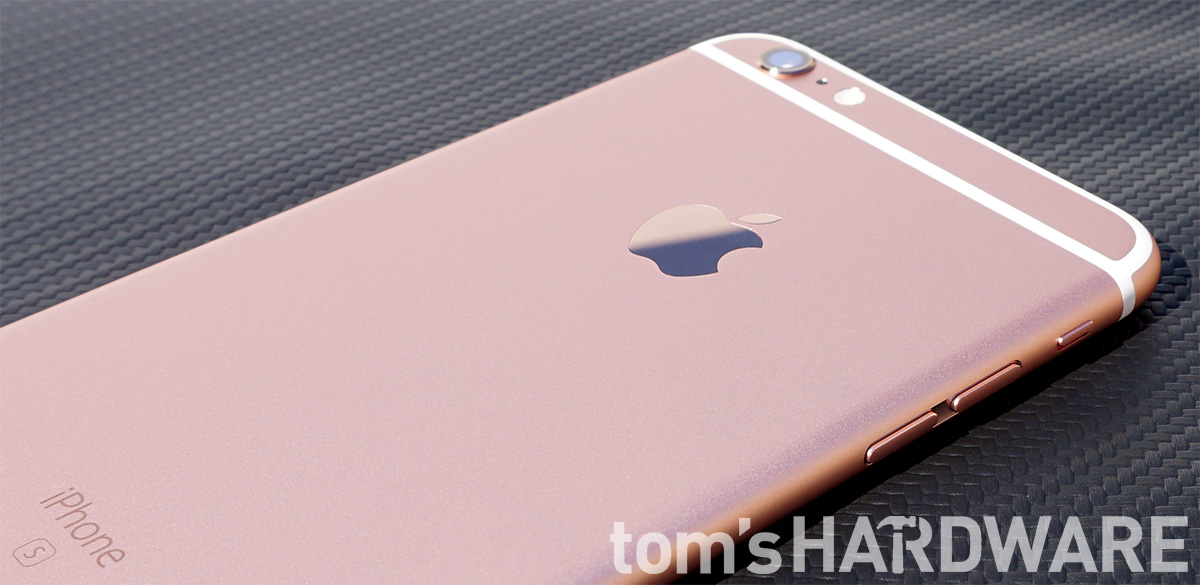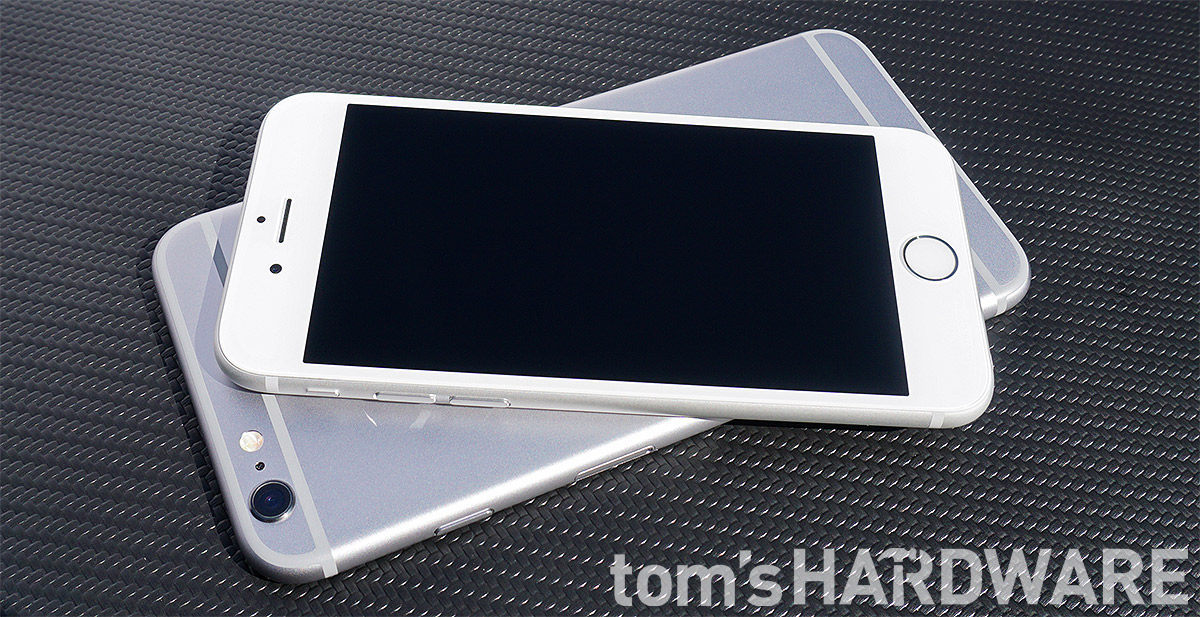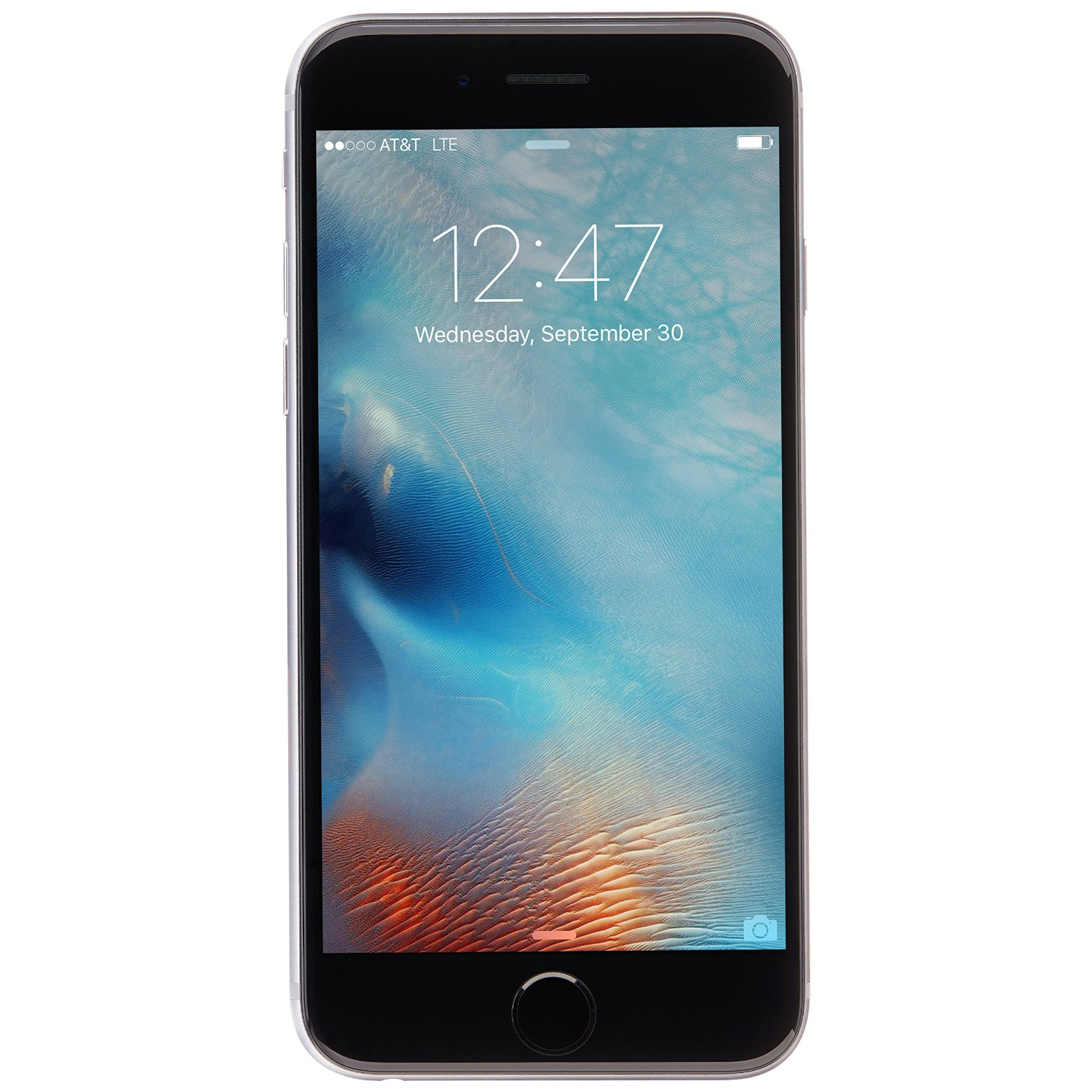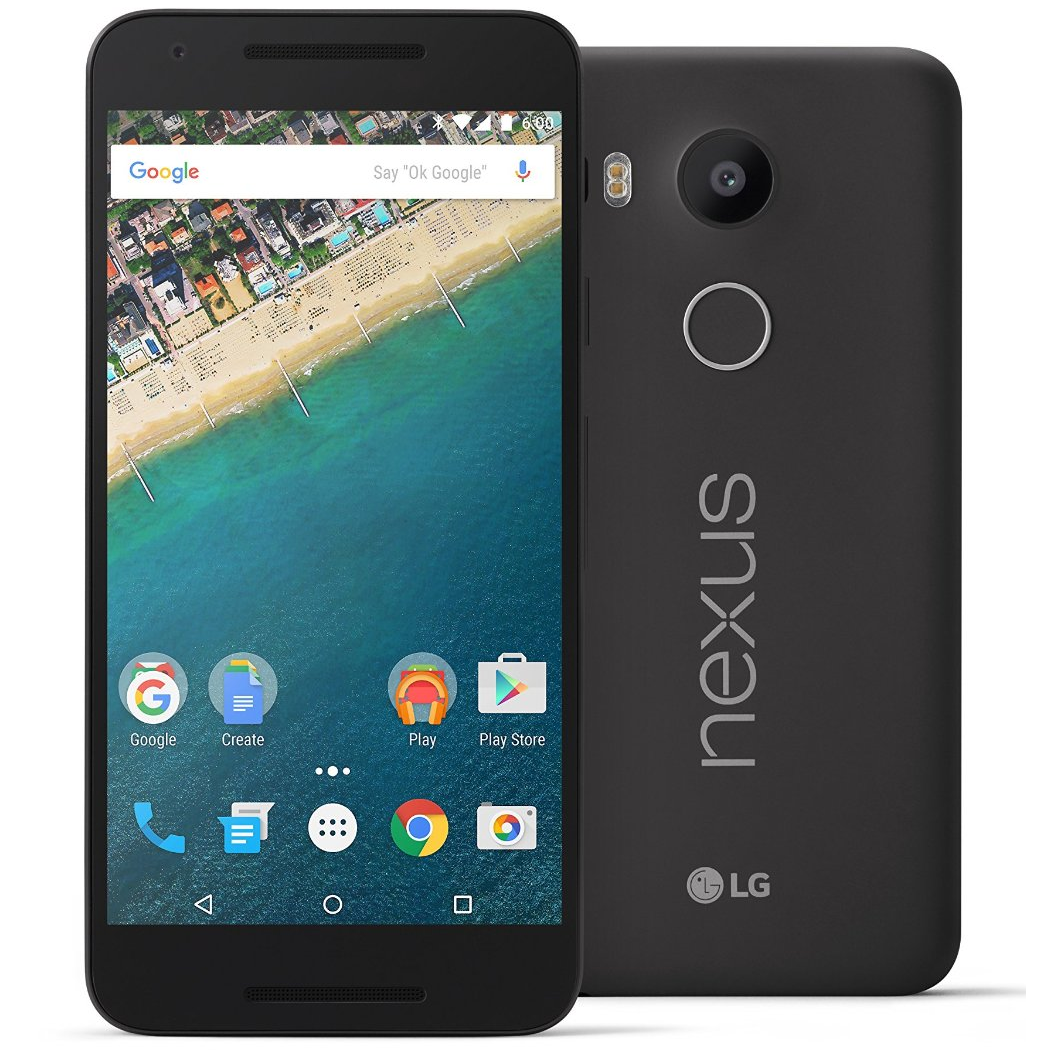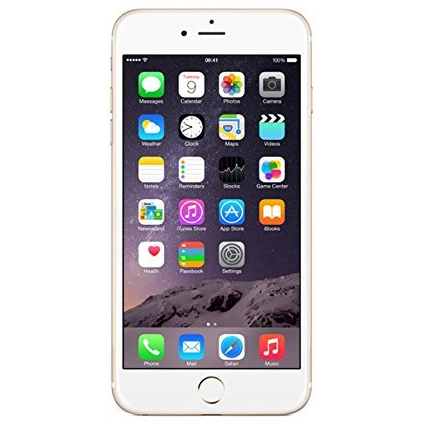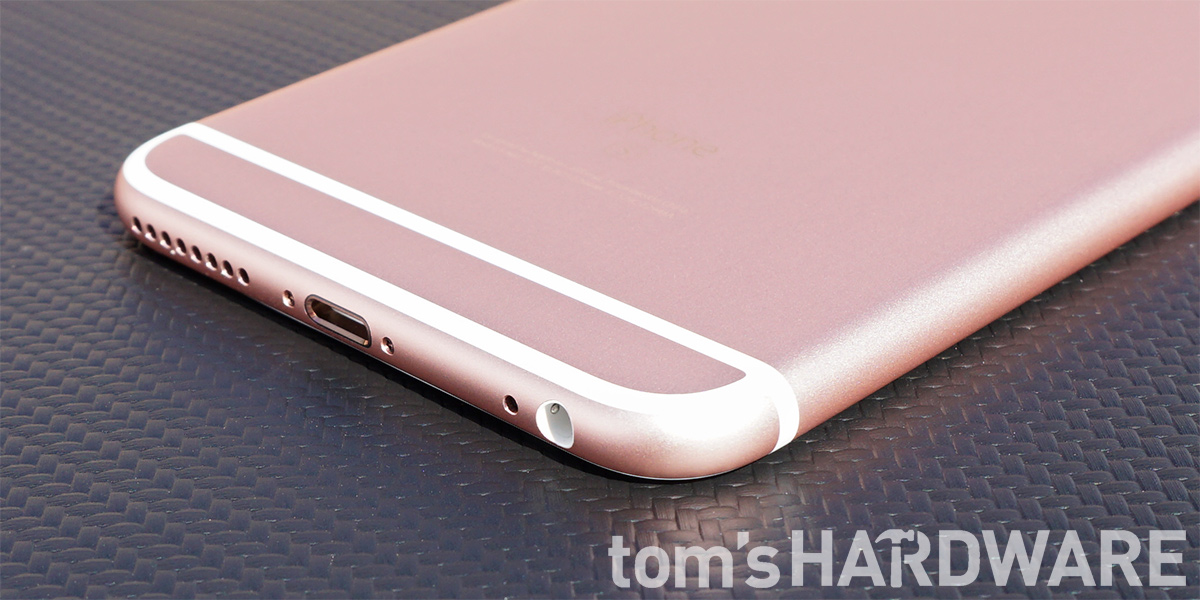Early Verdict
The decision to buy an iPhone or something else running Android or Windows has more to do with ecosystem than hardware. If you prefer fruit over sugary treats, the iPhone 6s and 6s Plus are excellent phones. The extra RAM and 3D Touch make them feel like new despite the similarities to the previous generation. While the new camera is no better than the old one, it’s still one of the best you can get. The iPhone 6s Plus’ better battery life and camera make it the stronger choice if you can handle its size.
Pros
- +
Performance • Screen • Fingerprint scanner • 3D Touch • Camera (still & video) • Battery life
Cons
- -
Price • 16GB base storage
Why you can trust Tom's Hardware
Introduction
The larger screens that came with the iPhone 6 and 6 Plus were the biggest hardware changes the iconic brand has yet seen and represented a major philosophical shift for Apple. Competitive pressure from Android OEMs and more cognizant consumers shattered Cupertino's stranglehold on what a smartphone should look like. Its customers wanted larger screens, and Apple gave them what they wanted.
This is an "s" update, however, so there's no radical redesign or reimagining of the iPhone. Instead, Apple focuses on boosting performance and refining last year's design for the iPhone 6s and 6s Plus. While their screens are the same size and resolution, most of the internals are new, starting with the A9 SoC. Apple's custom-designed, dual-core 64-bit CPU gets more cache and higher IPC (instructions per cycle). The A9 also gets a new PowerVR GPU, with its own architectural enhancements and two additional cores. Using a new FinFET manufacturing process allows Apple to ramp up clock frequencies, further increasing performance—up to 70 percent for the CPU and up to 90 percent for the GPU, according to Apple.
The M9 motion coprocessor is no longer a separate chip. It now resides on a special low-power island within the A9 SoC. This change unshackles Siri from the power outlet, an inconvenient restriction placed on the iPhone 6, whose M8 coprocessor took up additional space on the motherboard and drew too much power to be left on, listening for voice commands, when running on battery power. Now Apple's digital assistant is always listening, ready to respond as soon it hears you say, "Hey Siri." The M9 still collects data from the accelerometer, compass, gyroscope, and barometer too, feeding it to fitness tracking apps that log steps taken, distance traveled, and elevation traversed. Additionally, it now measures the speed of movement.
Riding atop the A9 SoC in a package-on-package (POP) configuration is perhaps the most important hardware improvement in terms of user experience: 2GB of RAM. Gone are the frequent app crashes and random interface stutters that plagued the iPhone 6 and 6 Plus. With twice as much RAM, the iPhone 6s and 6s Plus really do feel like completely new phones. Apps are not just more stable and smooth, either. Switching apps is also much faster, since they remain in memory and do not have to be constantly reloaded. The same is true for switching between several web pages in Safari. The iPhone feels like a flagship phone once again.
Memory capacity is only one area where the iPhone is falling behind, though. When it comes to camera performance, Samsung's Galaxy S6 devices surpass the iPhone 6 and 6 Plus. Apple hopes to rectify this situation by giving the 6s and 6s Plus new front and rear cameras that offer higher resolution and the ability to record 4K UHD videos. We'll discover if these changes push the iPhone back into the lead in performance and features once again later in the review.
The new iPhones should now be on par with the Wi-Fi performance of other flagships. Last year, the iPhone 6 added support for 802.11ac Wi-Fi, boosting theoretical bandwidth from 150Mb/s on the iPhone 5s to 433Mb/s using a single spatial stream and an 80MHz channel. For the 6s, Apple adds a second spatial stream, elevating bandwidth to a maximum of 867Mb/s.
Unfortunately, when it comes to the base storage option, the iPhone is still stuck in the past, offering a meager 16GB (~12GB usable). This is not enough for a modern smartphone, let alone a flagship phone. My mother-in-law, who has not installed any apps and does not do much more than text, managed to completely fill her 16GB iPhone 6 Plus with just pictures and a few short videos. With a larger camera sensor and the ability to shoot 4K video, the new iPhones will consume even more storage space. Apple does offer 64GB and 128GB storage options, but they do not come cheap.
Get Tom's Hardware's best news and in-depth reviews, straight to your inbox.
Apple iPhone 6s Specifications
Apple iPhone 6s Plus Specifications
MORE: Best Smartphones
MORE: How We Test Smartphones
MORE: All Smartphone Content
The iPhone "s" models are not just about new silicon, however. It's become a tradition for Apple to introduce a new usability feature in lieu of a new design. The iPhone 4s introduced Siri, Apple's voice activated assistant; the 5s added Touch ID, a functional fingerprint scanner; and now the 6s squeezes in 3D Touch, a pressure sensitive display with haptic feedback. Adding a third control dimension to the now familiar two-dimensional multi-touch controls allows for two new interactions: Peek and Pop. Will these become as ingrained as pinch-to-zoom, or should they be relabeled Try and Forget? We'll explore 3D Touch more in a bit.
Cellular
The iPhone 6s and 6s Plus are packed with more cellular silicon than any phone we've ever seen. There are multiple power amplifiers, front-end modules, and antenna switches from Avago, Murata, Qorvo, RF Micro Devices, Skyworks, and TriQuint, with some of these components specific to certain iPhone model numbers, depending on regional frequency requirements.
All of these chips surround a Qualcomm MDM9635M baseband processor. Manufactured on a 20nm process, it supports Category 6 LTE speeds of up to 300 Mbps on the downlink (2x20 MHz carrier aggregation with 64-QAM) and up to 50 Mbps on the uplink (1x20 MHz with 16-QAM). It also supports all major radio modes, including GSM/EDGE, UMTS (WCDMA, TD-SCDMA), LTE (LTE-FDD, LTE-TDD) and CDMA2000. This new processor consumes less power than the 28nm MDM9625M in the iPhone 6, while delivering higher downlink speeds than the older Category 4 LTE (150 Mbps) part.
The RF transceiver is another Qualcomm part. The WTR3925 is the first single-chip solution from Qualcomm to support all of the 3GPP approved carrier aggregation band combinations, eliminating the need for a second receive-only transceiver like the iPhone 6 used. Qualcomm's QFE1100 envelope tracker, part of the company's RF360 suite, dynamically adjusts voltage to the power amplifiers, wasting less energy and reducing heat generation.
All of this is required for supporting up to 23 LTE bands, up from 20 in the iPhone 6 and 13 in the 5s, the most in any smartphone, assuring the iPhone 6s will work in nearly any country you might travel to. Here's the full list of supported frequencies.
Voice over LTE (VoLTE) and Wi-Fi calling, which allows you to make higher‑quality wideband calls over a Wi‑Fi connection, were both supported on the iPhone 6 and carry over to the 6s. This latter feature came with an unfortunate limitation on the 6, however: turning it on would break Apple's Continuity feature. The iPhone 6s eliminates this restriction, allowing both features to be enabled without interfering with each other.
-
Shankovich I know lots of people are going to trash talk Apple here, but most of us know our hardware and thus should know a bit better. 2 gigs of ram seems low, but Apple's software is highly optimized and we know you can have a bunch of stuff open without it being that noticeable.Reply
Secondly, unless your eye ball touches the screen, you're not going to see a difference between a 1080p screen and above at typical viewing distances for a phone. (If you're going to complain about gaming on it, this site isn't for you). "So why don't they just put a higher res screen on it for the marketing aspect?" Well, aside from them being Apple, which is enough for most people, a higher res screen that most will barely be able to tell from FHD also means more work for the GPU, which means less battery life.
LG, Samsung, etc all do the same thing year over year, that being incremental upgrades, like Apple does. They're all the same. We've reached a saturation point in mobile devices now (probably did 2 years ago). -
10tacle What year is this? Why are we still seeing "new" so-called high end phones with 1080p 5.5" displays and 16GB base memory offerings? And for anyone who says that you can't really see the difference between 1080p and 1440p on such a small screen, get your eyes checked. Happy Samsung Note 5 owner here, upgrading from an 1136p, 326ppi iPhone 5S. (The Galaxy 6 and Note 5 are 1440p with 518ppi for anyone who cares).Reply -
monsta ummmmm don't you think you are just a bit late reviewing this phone that was released months ago ? LOLReply -
iam2thecrowe Seems ok if price isn't an object, most plans include the cost of the phone in a monthly payment now anyway. I will be getting one for work later this year, just hopefully battery life is much better than the 5s which is my current work phone. I wouldn't get one if I had to pay for it out of my own pocket though.Reply -
razor512 While I don't like the iphone, more companies need to follow their lead with the SOC. Instead of focusing on 8 slower cores (of which 4-6 of then remain idle most of the time since many tasks are not multithreaded. Focus on improving the IPC of the CPU and run newer but faster cores.Reply -
Astone3145 "QHD is only really necessary for AMOLED panels (due to having fewer red and blue subpixels than RGB stripe LCD panels), virtual reality applications (because the screen is closer to your eyes), and for people who augmented their genetic code with eagle DNA."Reply
I would love to have access to some of that augmented eagle DNA! -
MobileEditor ReplyI would love to have access to some of that augmented eagle DNA!
Do you struggle to see faraway objects? Find yourself squinting to read small text on your smartphone? Thanks to a breakthrough in genetic engineering, you can permanently upgrade your vision by augmenting your own blueprint with eagle DNA!
* See up to five times farther
* Experience more vivid colors
* See UV light
These are just a few of the advantages that await you after only a single, semi-painless treatment.
This treatment is not approved by the FDA. Some people may experience side effects, including upset stomach, loss of bone mass, accelerated growth of toenails, hardening of the lips, and nose bleeds. Please contact your doctor immediately if you feel the urge to jump from tall structures and soar above the trees, as this could indicate a potentially fatal condition. -
none12345 When your hardware is so far behind the competition its easy to make 70% gains lol. On one hand it's nice to see apple finally putting a little more hardware in their pones; on the other hand, flash is very cheap these days, and only 16 gigs is just downright laughable. The fact that put in like $5-15 more of ram and charge you $100-$300 is just a joke.Reply
And ya at minimum i would expect a 1080p screen, but really 1440p woudl be better. I dont know if phones need 4k in 5-6" just yet, at some point, sure. If you look at all the vr phone boxes coming out lately, you will absolutely notice a huge difference in screen res at a few inches from your eyes. Even 8k is not sufficient for that purpose.
In short tho, too little, too late, no thanks.


